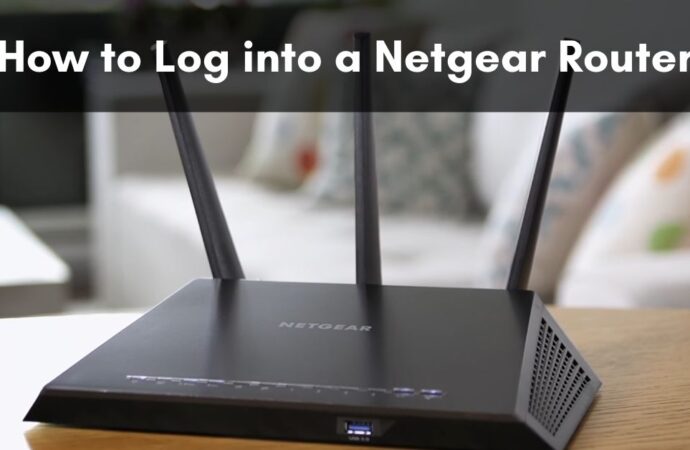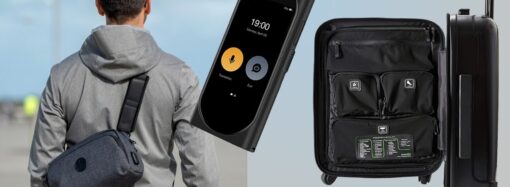Are you struggling to log into your Netgear WiFi router using the IP address 192.168.1.1? This IP address serves as an alternate option for accessing the admin panel of most Netgear routers. If you’re having trouble with the IP address, don’t worry – you can also use the customized service web URL, routerlogin.net, provided by Netgear. Stay tuned to learn how to easily access routerlogin.net.
192.168.1.1 is a commonly used IP address for accessing the admin panel of NETGEAR WIFI Routers. This IP address serves as a gateway to configure and manage various settings on your Netgear router. In addition to using 192.168.1.1 to access the admin panel, NETGEAR also provides a customized service web URL, routerlogin.net, as an alternative method to access the router settings.
If you encounter any issues accessing the Netgear admin panel through the IP address, utilizing the routerlogin.net web address or the Netgear Nighthawk app can be viable solutions. To access either 192.168.1.1 or routerlogin.net for the first time, simply open a web browser and enter the respective address or login information while connected to your Router’s WiFi network. You may not be connected to your Router’s WiFi network, so make sure to check your current connection and try again. The easiest way to manage your router’s settings and wireless network is the Nighthawk app. Make sure to have your Netgear account login information ready to authenticate and access the router’s settings. Don’t forget to update your password and add security questions for added protection.
Once you have successfully logged into your Netgear router admin panel, also known as the router admin page, you can proceed to make necessary adjustments and configurations to optimize the performance and security of your network. From setting up guest networks to updating firmware and managing connected devices, the admin panel offers a range of options to customize your router according to your preferences and requirements, including changing your router password for added security options. You can also perform a factory reset if needed, which will reset your router back to its default settings, including your SSID (WiFi Name), password, and security settings. To access the router information after a factory reset, login to your router configuration page and navigate to ADVANCED > Router Information. Beside IP Address, you will find the default gateway IP. Don’t forget to change your admin password periodically to ensure the security of your network.
Login to the Netgear 192.168.1.1 Admin page
Using the default IP address of 192.168.1.1 for your Netgear WIFI router allows you to access the configuration panel and manage internet and security settings. Logging in to your router’s web interface is a straightforward process that involves entering the IP address into your web browser’s address bar. Once you reach the Netgear genie login page at 192.168.1.1 or routerlogin.net, also known as the router’s IP address or router’s ip address, you will need to enter your username and wifi password (which are often set to default values unless changed by the user) to access the router’s settings on the router login page.
Within the configuration panel, you can customize various settings such as network name (SSID), password, parental controls, guest network setup, firmware updates, and port forwarding. It is essential to secure your router by changing the default login credentials and setting up a strong password to prevent unauthorized access.
Regularly accessing your router’s configuration panel allows you to optimize network performance, troubleshoot connectivity issues, and enhance overall security. Familiarizing yourself with the features and functionalities available in the configuration interface empowers you to make necessary adjustments tailored to your specific networking requirements.
- Make sure that the configuration device connected to the router has an active internet connection.
- Also, connected the configuration device to the LAN port of the Netgear. Connect the router via an Ethernet cable, not via a WIFI network.
- If all the setup is fine, open a web browser on the configuration device.
- And then, input http://192.168.1.1 or just routerlogin.net at the search bar of the web browser.
- After entering the default gateway address at the Addy of the web browser, click OK. Or you can hit the Enter tab to get on to the Routerlogin window.
- 192.168.1.1 will provide you with a login window. And it will ask you to enter some of the essential details of your router.
- These are the default username and passwords of your Netgear WIFI router. You will require it whenever you enter into the interface panel of your router.
- You can either use admin & password as the username and password login details. Or use ADMIN to fill both the required fields of the login window.
- Once you enter the Routerlogin credentials, you will log into the configuration page of your Netgear router login.
- Now, make the desired changes in your Netgear router or the ADSL modem.
No products found.
Netgear Extender login via 192.168.1.250
When accessing the Netgear extender login page through 192.168.1.250 or routerlogin.net, it is essential to ensure that the device you wish to connect is linked to your Netgear Routerlogin network. This connection is crucial for a seamless login process and configuration of your Netgear extender settings.
Upon establishing the connection, you can proceed by entering the default login credentials provided by Netgear or any customized login details if you have previously set them up. Accessing the Netgear extender login page allows you to manage various settings such as WiFi network configurations, security protocols, firmware updates, and connected devices, including the default settings for your router.
Additionally, it is recommended to secure your login credentials and avoid sharing them with unauthorized individuals to maintain the security and integrity of your network. Regularly updating your password and keeping your firmware up-to-date are good practices to safeguard your network against potential security threats and vulnerabilities.
In case of any difficulties accessing the Netgear extender login page or configuring your settings, referring to the user manual or contacting Netgear customer support for assistance can help resolve any issues promptly. By ensuring a smooth login process and maintaining proper configuration settings, you can optimize the performance of your Netgear extender and enhance your overall network experience. Additionally, troubleshooting router connections may require clearing your router’s cache in a web browser to ensure a successful Netgear Extender login via 192.168.1.250.
- Launch a default web browser from your connected computer. You can even use any device connected to the router.
- Connect your router and configuration device must using their LAN slots through an Ethernet cable.
- Then connect the modem provided by your internet service provider to the router via another Ethernet cable.
- The router and the modem communicate with one another through their WAN or the internet slots.
- Turn on all three devices: modem, router, and the computer. Use the required power adapters of each device.
- Navigate the web browser that you have launched to 192.168.1.250 or routerlogin.net.
- Then you can access the admin panel or log into the router.
- Press enter when you type in the web URL into the address bar of the browser.
- Now you have successfully got the Routerlogin window. Here, you have to type in the username and password of your router.
- You have to use the paraphrases, Admin and Password to complete the authentication process, and then hit the login tab.
Now, you have successfully logged in to your Netgear extender login admin panel. You have become eligible to access entire settings.
Why can’t I access the Netgear Routerlogin.net management?
- When configuring your Netgear router, it is crucial to ensure that the IP address you enter is accurate. While certain Netgear routers are compatible with the 192.168.1.250 IP address, others may require a different gateway address for setup and access. To avoid connectivity issues and streamline the configuration process, refer to your specific Netgear router model’s manual or online support resources to determine the correct IP address and gateway settings. Properly inputting these details will help optimize your network setup and ensure smooth operation of your Netgear router.
- When accessing the Netgear router login process, it is advisable to consider using a different web browser than the one typically utilized. This precaution can help prevent any potential compatibility issues or conflicts that may arise during the login procedure. By opting for an alternative web browser, you can ensure a smoother and more efficient login experience without encountering any unexpected obstacles. Additionally, using a different browser can also aid in troubleshooting any technical difficulties that might occur due to browser-specific settings or configurations. Remember, selecting a compatible web browser can contribute to a seamless Netgear router login process.
- When troubleshooting connectivity or login issues related to your network devices such as the modem, router, or computer, a common step is to power off all the devices. This process allows for a fresh start and can often resolve temporary glitches in the network setup. After turning off all the devices, including the modem, router, and computer, it is advisable to wait for a few minutes before turning them back on. This waiting period ensures that any residual charge dissipates and that the devices fully power down. Once you have waited for a few minutes, proceed to power on the devices starting with the modem first, followed by the router and then the computer. This sequence ensures that each device establishes its connection properly. After powering on the devices, you can attempt to log in to 192.168.1.250, which is a common gateway address used to access router settings or configurations. If you continue to experience issues after following these steps, it may be necessary to check cable connections, verify network settings, or contact your Internet Service Provider for further assistance. Troubleshooting network connectivity problems systematically can help in identifying and resolving issues efficiently.
- When setting up your network, it is crucial to ensure that the LAN ports of your router and computer are correctly plugged in. This step is essential for establishing a stable and secure connection between the two devices. By properly connecting the LAN ports, you can ensure smooth data transmission and avoid any potential connectivity issues. Additionally, using Ethernet cables of high quality and ensuring they are securely plugged in can help optimize network performance. Regularly checking the connections and addressing any issues promptly can help maintain a reliable network infrastructure.
- Connecting the WAN ports of your router and modem via an Ethernet cable is essential for establishing a stable and reliable network connection. This wired connection ensures that data can flow smoothly between the two devices, allowing for seamless internet access throughout your network. By using an Ethernet cable to link the WAN ports, you can guarantee faster speeds and better overall performance compared to a wireless connection. Additionally, it is important to use high-quality Ethernet cables to minimize interference and maintain a strong signal between the router and modem. This simple yet crucial step in setting up your network can significantly enhance your online experience and prevent connectivity issues in the future.
- Using the incorrect IP address 192.168.o.1 will lead to connection issues, as it is not a valid IP address format. It is crucial to input the correct IP address, such as 192.168.1.1, to access your router’s settings and configure your network properly. Remember to double-check the IP address before entering it in your browser to avoid any technical complications and ensure smooth network operations.
Why am I unable to access the Internet on My Netgear Extender?
- Make sure that you are using an active data plan.
- Check that your monthly data plans has not exceeded.
- Are you using PPPoE as your connection type?
- Then your internet service provider will provide the username and password.
- To connect to the Netgear WIFI internet, enter correct details into the Routerlogin window.
- The users of static IP addresses should ask for the correct username and password to their internet service provider.
- Have you replaced your Netgear router, but the internet connection is the same as the previous one?
- In this case, add the old MAC address when you get a new setup page of your extender.
Find the IP address under the Advanced panel>Internet Network. Once got, use it as the custom MAC address under this field.
How does the IP address 192.168.1.250 work?
192.168.1.250 is a private IP address that serves as a gateway to access the admin panel of your Netgear extender login page. In the vast online network, each destination has a public address, while some have only private IP addresses like 192.168.1.250. This unique resource locator of the internet search engine functions similarly to how GPS systems guide us in reaching physical destinations in the real world without needing to ask for directions. Just as we rely on our mobile devices for GPS navigation, this IP address acts as a digital guide to help users reach specific destinations on the internet efficiently.
Understanding private IP addresses like 192.168.1.250 is essential for configuring and managing networking devices effectively, enabling users to make necessary adjustments and settings to enhance their online experience securely and conveniently. Similar to public addresses that are easily accessible to all internet users, private IP addresses provide a secure pathway for individuals to access specific online resources or platforms within their personal or local networks.
By recognizing the significance of private IP addresses such as 192.168.1.250, individuals can navigate the complexities of networking environments with ease, ensuring seamless connectivity and efficient communication across various online platforms and devices. Whether setting up a home network or managing administrative tasks on networking equipment, having knowledge about private IP addresses plays a crucial role in optimizing digital experiences and enhancing online capabilities for users worldwide.
How do I log in to the Netgear wireless range extender?
To log into the Netgear wireless range extender, connect to the extender’s network using a device. Open a web browser and enter the default web address (usually mywifiext.net) in the URL bar. You will be prompted to enter the username and password to access the extender’s settings.
Note: Our website is supported by our users. We sometimes earn commission when you click on the links at no additional cost to you.
















Leave a Comment
Your email address will not be published. Required fields are marked with *